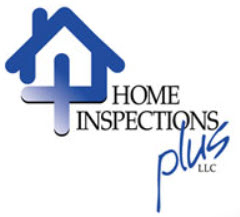Home Inspections: Radon Testing
What is radon?
Radon is a radioactive gas that has been found in homes all over the United States. It comes from the natural breakdown of uranium in soil, rock and water and gets into the air you breathe. Radon typically moves up through the ground to the air above and into your home through cracks and other holes in the foundation. Radon can also enter your home through well water. Your home can trap radon inside. You cannot see, smell, or taste radon. But it still may be a problem in your home. When you breathe air containing radon, you increase your risk of getting lung cancer. In fact, the Surgeon General of the United States has warned that radon is the second leading cause of lung cancer in the United States today. If you smoke and your home has high radon levels, your risk of lung cancer is especially high.
I'm selling my home, What should I do?
If you are thinking of selling your home and you have already tested your home for radon, provide your test results to the buyer.
If your home has not yet been tested for radon, have a test taken as soon as possible. If you can, test your home before putting it on the market. You should test in the lowest level of the home which is suitable for occupancy. This means testing in the lowest level that you currently live in or a lower level not currently used, but which a buyer could use for living space without renovations.
I'm Buying a Home. What Should I Do?
If the Home Has Already Been Tested for Radon you may decide to accept the earlier test result from the seller or ask the seller for a new test to be conducted. Before you accept the seller's test, you should determine:
- The results of previous testing;
- Who conducted the previous test: the homeowner, a radon professional, or some other person;
- Where in the home the previous test was taken, especially if you may plan to live in a lower level of the home. For example, the test may have been taken on the first floor. However, if you want to use the basement as living space, test there.
- What, if any, structural changes, alterations, or changes in the heating, ventilation, and air conditioning (HVAC) system have been made to the house since the test was done. Such changes may affect radon levels.
If you decide that a new test is needed, discuss it with the seller as soon as possible.
If the Home Has Not Yet Been Tested for Radon, make sure that a radon test is done as soon as possible. Consider including provisions in the contract specifying:
- Where the test will be located
- Who should conduct the test
- How the seller and the buyer will share the test results and test costs (if necessary)
- When radon mitigation measures will be taken and who will pay for them.
Make sure that the test is done in the lowest level of the home suitable for occupancy. This means the lowest level that you are going to use as living space that is finished or does not require renovations prior to use. Home Inspections Plus LLC can help you make some of these decisions.
If you decide to finish or renovate an unfinished area of the home in the future, a radon test should be taken before starting the project and after the project is finished. Generally, it is less expensive to install a radon-reduction system before (or during) renovations rather than afterward. EPA recommends that you take action to reduce your home's indoor radon levels if your radon test result is 4 pCi/L or higher. It is better to correct a radon problem before placing your home on the market because then you have more time to address a radon problem.
If elevated levels are found during the real estate transaction, the buyer and seller should discuss the timing and costs of the radon reduction. The cost of making repairs to reduce radon levels depends on how your home was built and other factors. Most homes can be fixed for about the same cost as other common home repairs, like painting or having a new hot water heater installed. The average cost for a contractor to lower radon levels in a home can range from $800 to about $2,000.
Select a qualified radon-reduction contractor to reduce the radon levels in your home. Any mitigation measures taken or system installed in your home must conform to your state's regulations. In states without regulations covering mitigation, the system should conform to EPA's Radon Mitigation Standards.
EPA recommends that the mitigation contractor review the radon measurement results before beginning and radon-reduction work. Test again after the radon mitigation work has been completed to confirm that previous elevated levels have been reduced. EPA recommends that the test be conducted by an independent qualified radon tester.
For more information visit these websites:
EPA's main radon page
Includes links to the NAS radon report, radon-resistant new construction, the map of radon zones, radon publications, hotlines and more.
Wisconsin Radon Contacts
State Radon Contacts. Provides detailed information on contacting Wisconsin's radon office, including links to some state websites. State indoor air quality contacts are also included.
EPA's Radon Publications
Offers the full-text version of EPA's most popular radon publications, including the Consumer's Guide to Radon Reduction, the Citizen's Guide to Radon, and the Model Standards and Techniques for Control of Radon in New Residential Buildings, and others.

